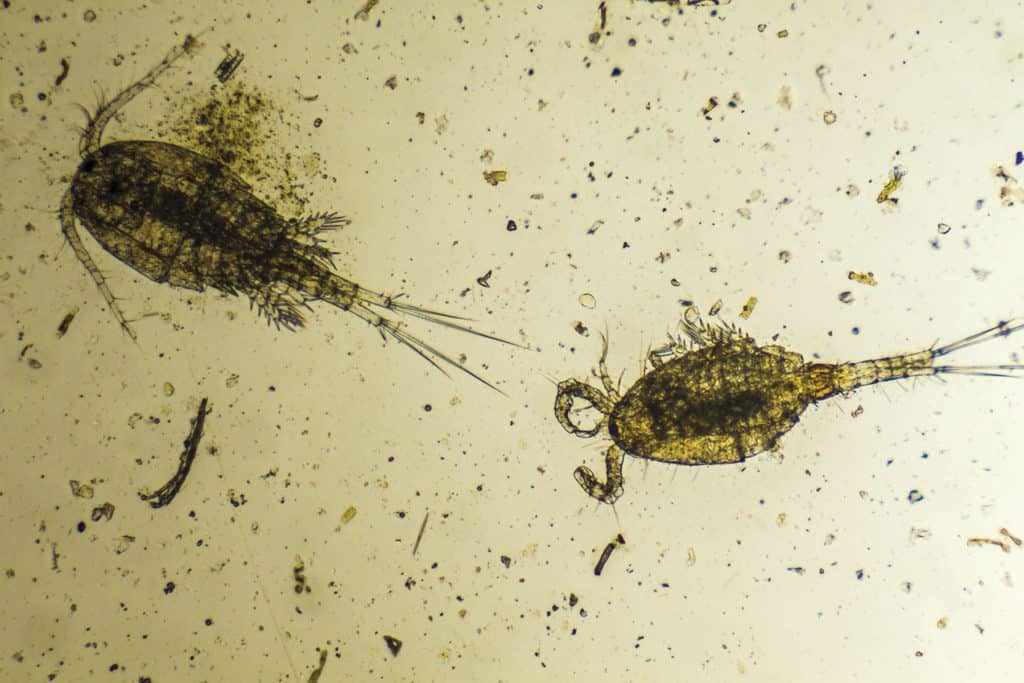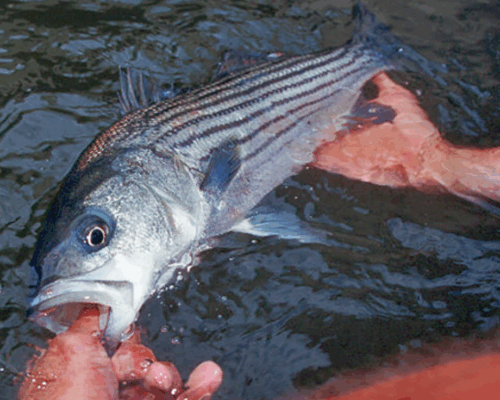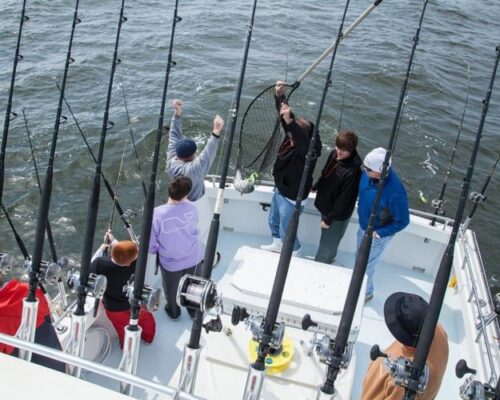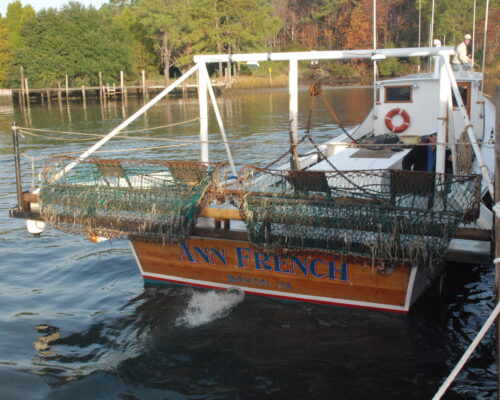How the Bay becomes the storage cell and pantry for renewal and life.
March 20 will bring the vernal equinox, the moment when the center of the sun is directly over the equator and the arrival of spring’s gift of more and stronger sunlight. Every day now, the Chesapeake’s waterways absorb more and more energy and the slowly rising temperatures in the Bay and its rivers and creeks speeds up the metabolisms and body processes of the Bay’s creatures, plant and animal alike.
The extra light is particularly valuable to phytoplankton—the various microscopic, drifting, single-celled algae that absorb the energy through their complex chlorophyll molecules and convert it into sugars that they use to grow and divide, producing blooms of life. The resulting vegetable soup is too thin for us to see without concentrating the cells by straining a lot of water through a very fine-mesh net and examining the catch with a powerful microscope. Nonetheless, the concentration of cells can grow to millions per
liter of Bay water.
The mix of phytoplankton species varies considerably over the Chesapeake’s year, depending on salinity and temperature. In spring, when salinity is low from rains and snowmelt, the dominant species belong to a group called diatoms. These single-cell creatures extract silica from the water to build tiny, complex jewel box-like structures around their bodies.
Diatoms grow everywhere on Earth, from stream bottoms to open ocean to the very soil beneath us. Their photosynthetic processes turn out about 20 percent of the oxygen on earth and provide half of the organic material in the oceans. Early spring’s combination of sunlight and temperature favors diatoms in Chesapeake waterways, allowing them to bloom in numbers that boggle the mind.
These microscopic creatures form a vast food source for copepods, the most abundant animals in the Chesapeake ecosystem. Compared to diatoms, they’re huge; just barely large enough to see with the naked eye. Where diatom blooms can measure millions of cells per liter, copepods feeding on a bloom number from several hundred thousand to a million per cubic meter. That’s still a lot of critters. Strain the water in a local river with a small plankton net for ten minutes at this time of year and you’ll see tiny shapes darting back and forth. They’re too small to cover much territory on their own, so they still qualify as plankton (drifters) even though they can swim up and down in the water column in pursuit of diatoms.
Look at a plankton net sample under a microscope and you’ll recognize copepods as crustaceans, related to shrimp and crabs. Although several dozen species occur in the Chesapeake, the vast majority belong to a handful of species that sort themselves out by temperature and salinity.
So why should we care about these tiny shellfish? Well, they form a critical link in the Chesapeake’s food web. Think of this as a giant triangle with phytoplankton at the base acting as a giant battery, so to speak, collecting solar energy through photosynthesis and conveying that energy into food for the copepods, the next layer. As is true in most ecosystems, the biomass (tonnage of life) of each layer in the food web is about 10 percent the size of the layer below it. In other words, it takes roughly ten pounds of diatoms to feed a pound of copepods.
So, what eats the copepods?
Now we get into more familiar territory with fish that feed by swimming through the plankton soup, straining microscopic food with structures on their gill arches. Different species, and sizes within species, strain different size plankton. Thus, young-of-the-year menhaden (peanut bunker) graze on tiny phytoplankton, while their older kin strain copepods and other larger plankton (zooplankton) consisting of small animals and immature stages of larger animals. Alewife and blueback herring and hickory and American shad also feed on the plankton.
The herring and shad are entering the Bay now on their spawning runs up the rivers, and it’s no accident that their runs coincide with the diatom and copepod blooms that come with March’s longer, warmer days. Those ecological relationships have developed over thousands of years.
Also in the spring mix are the juvenile versions of the species that spawn in the Bay’s rivers this month and next—yellow perch, rockfish, white perch, herring and shad. Copepods play key roles in their development. And we shouldn’t forget another critical forage fish, the bay anchovy, which is considered to be the most abundant finfish in the Chesapeake system. These translucent one- to three-inch fish have large underslung mouths, the better to eat copepods with. The vastness of their food source is the key to their abundance. What eats them? Essentially every fish and bird that’s built to catch them, especially terns and rockfish. And speaking of birds, all this biomass in the water also suits our ospreys, just returning from their other summer in Central and South America.
The Chesapeake’s food web is more complex than a simple triangle. It’s dynamic, shifting every day according to the weather, like a huge kaleidoscope. The patterns are fascinating, and, at this season, they bring the promise of our annual Chesapeake Bay renewal.




